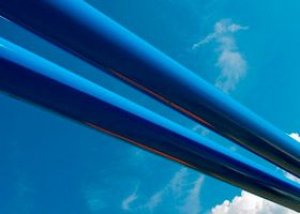
All iLive content is medically reviewed or fact checked to ensure as much factual accuracy as possible.
We have strict sourcing guidelines and only link to reputable media sites, academic research institutions and, whenever possible, medically peer reviewed studies. Note that the numbers in parentheses ([1], [2], etc.) are clickable links to these studies.
If you feel that any of our content is inaccurate, out-of-date, or otherwise questionable, please select it and press Ctrl + Enter.
"Smart pipe" is a new source of electricity
Last reviewed: 02.07.2025
 ">
">A new system for water pipes allows electricity to be generated when water starts moving through the pipes, reducing overall energy costs while the hydropower generated is environmentally friendly.
The pipes have special rotating turbines built into them that produce energy as soon as water starts flowing through the pipes and send it to the generator.
As noted by the CEO of the company Greg Semler, whose specialists developed the new system, it is now quite difficult to create an energy source that will be harmless to the environment. However, the company managed to do the almost impossible - specialists created an energy source inside a pipe through which drinking water flows, while the atmosphere and representatives of the animal world are not threatened.
As is known, water utilities use a huge amount of electricity, and the new system will significantly reduce the costs of providing the city with drinking water. As experts noted, municipal enterprises will be able to use hydropower for their own needs or sell it.
Greg Semler also noted that there is already a project in one city in California, where a new system supplies energy to street lights that illuminate the streets at night. During the day, the city could well use hydroelectric power to offset some of the costs.
One of Portland's pipelines has already installed new systems that generate power for the city's grid. The system isn't yet capable of powering the entire city, but the pipes produce enough electricity to power individual buildings, such as a school, and to offset the city's overall electricity bill.
It is worth noting that the system works only in those places where there is a natural flow of water or under the influence of gravity, when pumping, the system, on the contrary, begins to expend energy. However, such pipes have one distinctive feature - they have built-in sensors that control the volume of water, something that was previously impossible for utility workers.
Electric infrastructure has made incredible strides in the last few decades, but no comparable system has been created for water, Semler said, citing a burst pipe near the University of California that lost about 20 million gallons of water at the height of a drought.
It was only when the university reported that the pipe had burst that it became known, and the new system will measure the pressure in the pipe, which will make it possible to find out about the tightness of the pipeline. Thanks to the introduction of the new system, it will be possible to obtain information about the current state of the pipe, and utility companies will be able to manage the infrastructure more effectively.
Also, thanks to the sensors, it will be possible to monitor the quality of drinking water supplied to the population.
The developer plans to collaborate with cities and implement the new system as old pipelines wear out, and the possibility of collaborating with developing countries is not ruled out.
In addition, this method of obtaining energy allows you to have a remote source, for example, outside the city where there is no electricity.
